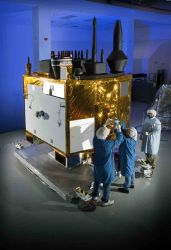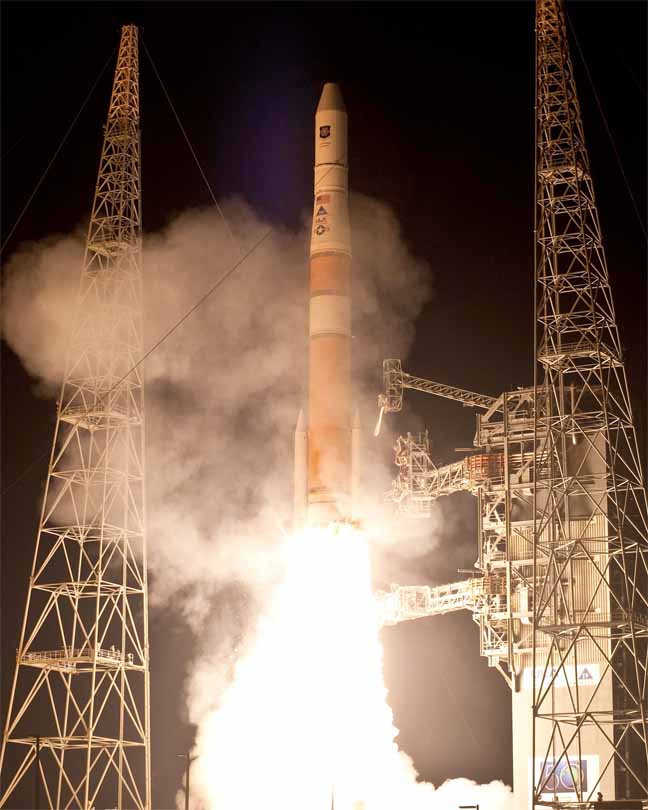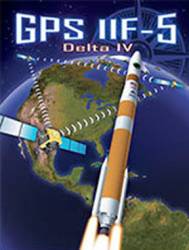 Boeing technicians and first Block IIF satellite
Boeing technicians and first Block IIF satelliteThe Boeing Company has successfully assembled and integrated all flight hardware onto the first GPS Block IIF (follow-on generation) satellite. Launch is now scheduled for the second half of 2008.
GPS llF spacecraft will bring new capabilities to the GPS constellation, such as a new encrypted military code, a new civil signal, crosslink enhancements, increased signal power, and longer design life. Boeing is building 12 GPS Block IIF satellites under contract from the GPS Wing at the Space and Missile Systems Center at Los Angeles Air Force Base.
The Boeing Company has successfully assembled and integrated all flight hardware onto the first GPS Block IIF (follow-on generation) satellite. Launch is now scheduled for the second half of 2008.
GPS llF spacecraft will bring new capabilities to the GPS constellation, such as a new encrypted military code, a new civil signal, crosslink enhancements, increased signal power, and longer design life. Boeing is building 12 GPS Block IIF satellites under contract from the GPS Wing at the Space and Missile Systems Center at Los Angeles Air Force Base.
The satellite’s L-band payload will include hardware that generates the new L5 civil signal. Designed to enhance non-safety-critical applications, L5 signals will improve aviation and other precision safety applications.
Currently, technicians are preparing GPS IIF for key dynamic environmental tests designed to confirm its structural design and mechanical integrity. They also are attaching the solar panels and configuring the satellite before it undergoes several physical tests. The tests will help ensure robust mission assurance with an emphasis on product integrity and mission success.
Each GPS IIF satellite will complete acoustic stress tests using high-powered speakers to verify that the spacecraft can tolerate the high sound pressure levels during launches; mechanical tests similar to a separation test to make sure it disconnects cleanly and correctly from the launch vehicle; tests of its deployable mechanisms such as the solar wings and the antenna to ensure that they release correctly on-orbit; and finally, GPS IIF will undergo thermal vacuum testing to confirm its ability to operate in a vacuum and under the extreme temperatures of space





